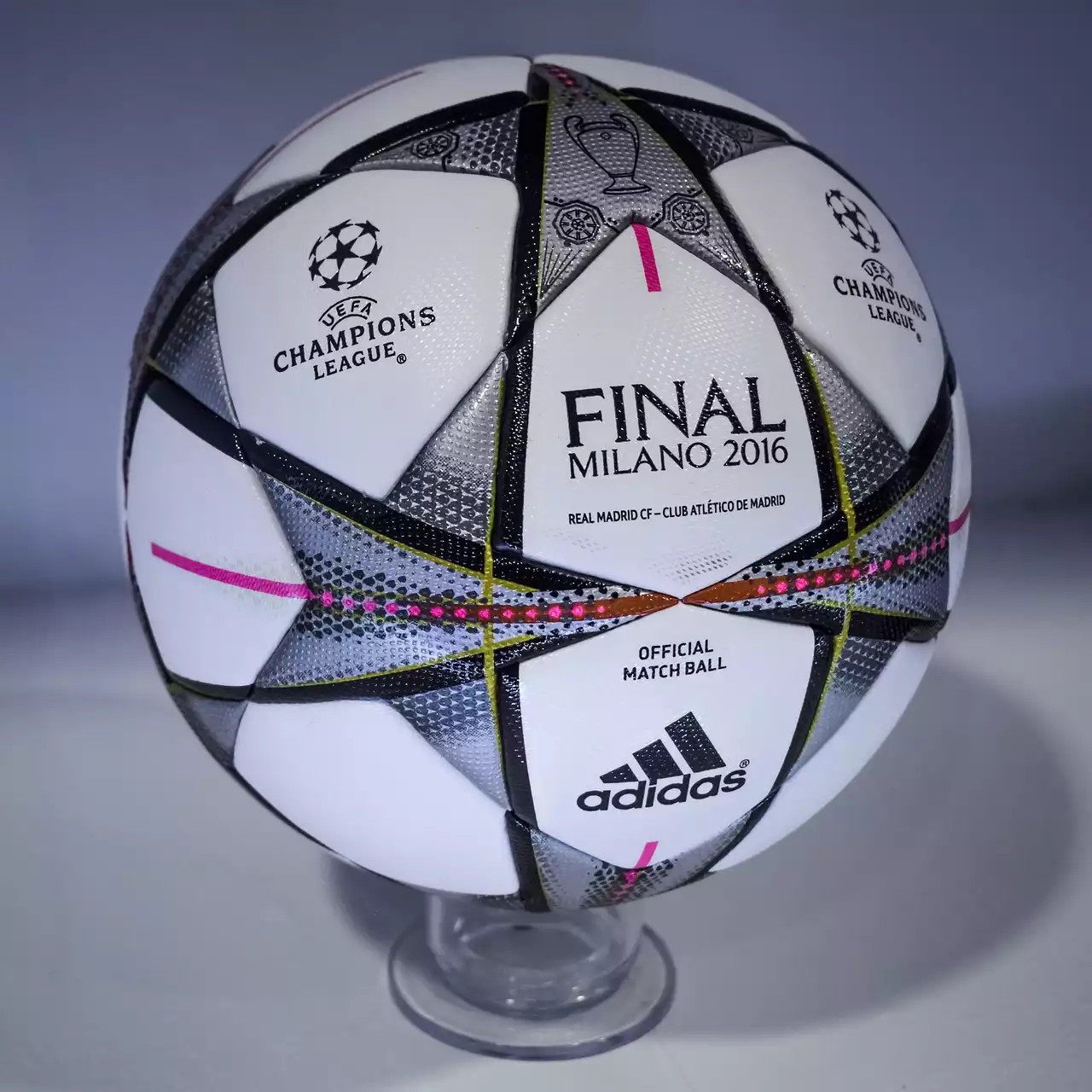When you think of the FIFA World Cup, you most likely think about great football and outstanding players. However, what stands out, even more, is the Official Game Ball – each edition hosts its very own exclusive design. The latest FIFA World Cup Official Match Ball was unveiled on June 19, 2018, in Moscow and it’s called "ENDLESS VISION". But here we will talk about the first official World Cup Ball.
The FIFA World Cup Official Ball England 1966 was the first official match ball of any FIFA World Cup. According to the rules set by FIFA, it could not be changed in any way. The ball had to be completely spherical and made of leather or natural leather panels. It also had to be black with a red panel that contained the manufacturer’s logo and an orange stripe around the circumference of the ball. These specifications were met with the Mitre Delta V Pro design. It was constructed with 22 panels and its surface was textured to improve accuracy when shooting on goal. The Delta V Pro was a classic example of a symmetrical ball with perfect surface symmetry about its vertical axis. The Mitre Delta V was used in all subsequent editions of the FIFA World Cup until 1970, after which point Adidas became the official match ball supplier for all future tournaments until today.
History
Before the beginning of the FIFA World Cup in 1966, there was no official ball for the tournament. The organizers of the FIFA World Cup 1966 decided that they needed to select an official match ball. They decided to hold a contest in which they invited football equipment manufacturers to present prototypes of proposed match balls. Nine companies responded and submitted 12 prototype balls. The selection committee decided that the Mitre ball was the best choice and should become the first official match ball of any FIFA World Cup.
Why Did FIFA Select the Mitre Delta V Pro?
The selection committee chose the Mitre Delta V Pro because it met the specifications and was one of the cheapest options. It was made of natural leather, which was cheaper than synthetic leather. The official ball for the FIFA World Cup 2010, the Adidas Jabulani, was criticized for being too light and unstable. The Mitre Delta V Pro also had a similar design as the Adidas Tango, which was the official match ball of the UEFA Euro 1984. The Tango was later used for the 22-panel Adidas World Cup Rosh Hashanah and the event.
Specifications of the Mitre Delta V Pro
The ball was completely black, made of leather or natural leather panels, and weighed between 440-450 grams. It had a circumference of 72 cm, a diameter of 27 cm, and a pressure of 0.6 atm. The ball also had a red panel that contained the manufacturer’s logo, as well as an orange stripe around the circumference of the ball. The ball was made with 22 panels that were stitched together and finished with two layers of black paint. The ball had a textured surface so as to improve accuracy when shooting on goal, and the texture was applied using a special machine called a sand whipper.
What Happened to the Ball After the World Cup?
The ball was used in all subsequent editions of the FIFA World Cup until 1970, after which point Adidas became the official match ball supplier for all future tournaments until today. The Mitre Delta V was not one of the many prototypes that were showcased before the Adidas Tango. It was the only official match ball of the World Cup 1966. The Mitre Delta V was used in all subsequent editions of the FIFA World Cup until 1970, after which point Adidas became the official match ball supplier for all future tournaments until today. The Mitre Delta V was not one of the many prototypes that were showcased before the Adidas Tango. It was the only official match ball of the World Cup 1966.
Final Words
The FIFA World Cup Official Ball England 1966 was the first official match ball of any FIFA World Cup. According to the rules set by FIFA, it could not be changed in any way. The ball had to be completely spherical and made of leather or natural leather panels. It also had to be black with a red panel that contained the manufacturer’s logo and an orange stripe around the circumference of the ball. These specifications were met with the Mitre Delta V Pro design. It was constructed with 22 panels and its surface was textured to improve accuracy when shooting on goal. The Delta V Pro was a classic example of a symmetrical ball with perfect surface symmetry about its vertical axis. The Mitre Delta V was used in all subsequent editions of the FIFA World Cup until 1970, after which point Adidas became the official match ball supplier for all future tournaments until today.


 Women Who Inspired Their Brothers in Men's Olympic Football
Women Who Inspired Their Brothers in Men's Olympic Football
 Cracking the Code: Exploring the 5 Essential Rules that Shape the Coppa Italia Format
Cracking the Code: Exploring the 5 Essential Rules that Shape the Coppa Italia Format
 Standard Liège: Tradition and Modernity in Harmony
Standard Liège: Tradition and Modernity in Harmony FIFA World Cup Official World Cup Ball since 2000
FIFA World Cup Official World Cup Ball since 2000 FIFA World Cup Official Ball Russia 2018
FIFA World Cup Official Ball Russia 2018 All Adidas FIFA World Cup Official balls
All Adidas FIFA World Cup Official balls Adidas Telstar 19 - FIFA World Cup Official ball for Qatar 2022
Adidas Telstar 19 - FIFA World Cup Official ball for Qatar 2022